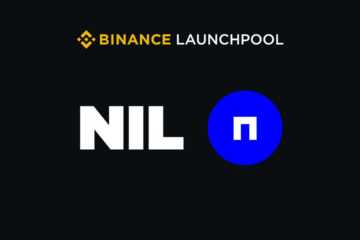Huma Finance is tackling a tangible problem: unlocking liquidity from real-world income streams. Backed by Circle and Stellar, and now launching via Binance Launchpool, HUMA could be the project that puts PayFi at the center of Web3’s next evolution.
Overview of Huma Finance
HUMA Finance (token: HUMA) is the 70th project launched on Binance Launchpool, targeting the Payment Financing (PayFi) sector – a model that provides funding based on payment streams. In simple terms, HUMA enables income-based financing: for example, advancing funds against upcoming invoices or income, leveraging stablecoins and DeFi to facilitate faster liquidity access.
The project is strongly backed by major investors such as Circle, HashKey Capital, and the Stellar Development Foundation (SDF), with a total of $46 million raised. This has positioned HUMA as a strong contender ahead of its token listing.
As of mid-May 2025, just two weeks after the launch of Huma 2.0 on Solana, the protocol had already recorded over $4 billion in total transaction volume (TTV). It also witnessed impressive user growth, with the number of active wallets surging by more than 490% – from 5,600 to 33,000.


Source: Dune
Huma Finance Tokenomics
Token Allocation
The HUMA token has a fixed total supply of 10 billion. Its distribution is structured as follows:
- LP & Ecosystem: 31%
- Investors: 20.6%
- Team & Advisors: 19.3%
- Protocol Treasury: 11.1%
- CEX & Marketing: 7%
- Initial Airdrop: 5%
- MM & On-chain Liquidity: 4%
- Pre-sale: 2%


Source: Huma
Approximately 52.7% of the total token supply is allocated to the team and investors: 20.6% to investors, 2% to pre-sale early backers, 19.3% to the team and advisors, and 11.1% reserved in the treasury for long-term development. All of these tokens are subject to a full 12-month lock-up, followed by linear vesting over three years, with unlocks occurring quarterly.
This vesting schedule is considered relatively tight, meaning that token unlocks for the team and investors will only begin in May 2026. As a result, the HUMA token is expected to face minimal sell pressure from large holders during its first year post-launch.
Additionally, HUMA has announced plans for a second airdrop campaign (2.1% of total supply), set to take place three months after the TGE, targeting eligible users. Around that time, the protocol will also begin distributing LP rewards on a quarterly basis.
Overall, HUMA’s tokenomics are viewed as community-friendly – with nearly half of the supply allocated to users, while maintaining strong short-term inflation control.




Source: Huma
Comparison with Recent Binance Launchpool Projects
To estimate HUMA’s potential listing price, it’s helpful to examine the performance of recent Binance Launchpool projects. The table below summarizes the TGE price, initial fully diluted valuation (FDV), and ATH for the four Launchpool projects that preceded HUMA:


Most recent Launchpool projects launched with FDVs near $700M, except WCT, which had a lower FDV due to supply.
Specifically, Initia, GUNZ, and SXT all launched with FDVs close to $700M, while WCT debuted at approximately $280M. Post-listing, these tokens reached peak prices ranging from approximately 1.3x to 2.6x their TGE prices.
These cases offer several useful reference points for evaluating HUMA:
- A $700M initial valuation is now considered standard within the Launchpool ecosystem. Investors tend to accept this FDV level, especially when the project fits a strong theme or hot sector.
- For projects with ~$700M FDV at launch, short-term post-listing price gains tend to range from 1.3x to 2x. When FDV starts lower, as with WCT, upside can be greater — WCT jumped 2.6x thanks to its low valuation.
- With HUMA’s FDV estimated near $700M, a 1.5x–2x short-term gain looks likely if demand holds strong.
The broader market backdrop in May 2025 further strengthens this outlook. Bitcoin recently hit a new all-time high of $111K, with the Fear & Greed Index deep in “Extreme Greed.” Liquidity is shifting into altcoins, and new Binance listings are seeing strong gains from FOMO and surplus capital.
Importantly, BTC is holding near its highs and macro conditions look calm after Trump delayed tariff enforcement. As a result, many traders are leaning toward long positions this week.
This stable backdrop lowers the chance of sharp swings during HUMA’s launch, helping it ride market momentum smoothly.
Given these factors, HUMA stands a strong chance of performing well after listing, if it maintains momentum and investor interest.
Market Comparison
To better grasp HUMA’s positioning, we can compare it with two prominent players in the decentralized credit and RWA -based lending space: Plume Network (PLUME) and TrueFi (TRU) – both considered early pioneers in DeFi credit and asset-backed financing.
HUMA vs PLUME
Plume is a specialized Layer-1 blockchain for real-world assets (RWA), with its TGE taking place in January 2025. The project launched with a total supply of 10 billion PLUME tokens and released 20% of its supply at TGE (approximately 2 billion tokens) at an initial price of $0.15 – implying a FDV of around $1.5 billion and an initial circulating market cap of $320 million.


Thanks to favorable market conditions, PLUME saw an immediate price uptick of ~15% on listing day, peaking at $0.184. As of May 2025, the token trades around $0.15–$0.16, effectively holding its TGE price level.
This suggests the FDV has remained stable at ~$1.58 billion, with a circulating market cap of ~$380 million and about 24% of the total supply unlocked. The market’s sustained valuation reflects continued confidence in the RWA narrative.
Importantly, Plume enforces a strict vesting schedule: the team and early investors hold 41% of the total supply, which remains fully locked for the first year and gradually unlocks over the following two years (2026–2028). This token distribution closely mirrors that of HUMA – both projects prioritize community allocation (46–47%) and enforce a one-year cliff followed by multi-year vesting for insiders.


This follows a common Launchpool trend: high FDV with low float to build hype and limit early sell pressure.
Given these similarities, investors can expect HUMA to hit or exceed a $1B FDV if conditions stay strong.
Plume raised $30 million in total from Seed and Series A rounds before launching publicly. Plume raised $20 million in Series A funding in December 2024, according to CoinDesk. Top firms joined the round, including A.Capital, Reciprocal, SV Angel, HashKey, and Galaxy Digital. Their backing helped boost market confidence in Plume’s long-term potential.
HUMA vs TrueFi
Launched in late 2020, TrueFi was the first DeFi protocol to introduce uncollateralized lending on-chain. At the time of its debut, TRU’s FDV was relatively modest – in part due to limited circulating supply and an initial price of around $0.05.
However, as a first-mover backed by prominent investors like a16z and Alameda Research, TRU rapidly gained traction during the 2021 bull market.
The token reached an all-time high of approximately $1.05 in August 2021, corresponding to a peak FDV of around $1.4 billion. However, TRU’s price later collapsed – falling more than 95% to around $0.04 as of now (May 2025), with a market cap of ~$54 million and an FDV of ~$60 million.


Several factors contributed to this decline. A key issue was aggressive token unlocks, which continually increased circulating supply without corresponding demand. TRU had limited utility — users primarily used it for staking to underwrite risk within the protocol.
Users who staked TRU evaluated borrower creditworthiness and took on slashing risk in case of defaults, in return for a share of the lending fees. While innovative, this model struggled to sustain long-term token demand.
Huma Finance Price Prediction: HUMA Pre-TGE Price Forecast
Binance will open trading for HUMA at 13:00 UTC on May 26. As with other Launchpool tokens, a FDV of around $700 million would imply an initial trading price near $0.07 – a common baseline seen in recent Launchpool listings.
Read more: Check your Huma Finance (HUMA) airdrop
However, there is a strong possibility of a sharp initial price surge, as has occurred with other tokens. HUMA could quickly rally to $0.10–$0.12, representing a 40–70% gain from the projected $0.07 starting price.
This would equate to an FDV of approximately $1.0–$1.2 billion, aligning with the peak valuations of comparable sector leaders like Initia and TrueFi, both of which reached FDVs of ~$1.4 billion at their respective ATHs.
Overall, given the favorable conditions – including a strong crypto market backdrop, high-profile investors, and over 100,000 users participating in Launchpool farming — HUMA is unlikely to debut below its TGE price. A positive first-day performance is highly likely.


The more critical question is whether HUMA can sustain this momentum beyond the launch window. That will depend on the protocol’s fundamental strength, ongoing user adoption, and broader capital flows within the market.
Conclusion
All signs suggest that HUMA will debut at a price close to $0.07, implying a FDV of approximately $700–800 million. In the short term, the main risks for HUMA revolve around high volatility and profit-taking pressure from Launchpool participants.
However, the post-TGE bullish thesis for HUMA remains compelling. The project taps into a timely and evolving narrative – Payment Financing (PayFi), which sits at the intersection of DeFi and the rising interest in RWA use cases. Its tokenomics are also holder-friendly, with limited inflation during the first year due to tight vesting schedules and a low initial float.
Moreover, HUMA benefits from backing by both crypto-native funds and traditional fintech players, positioning it well to bridge the gap between DeFi and off-chain financial applications. If the team delivers on its roadmap – particularly by launching its PayFi lending platform and onboarding traditional partners, HUMA has the potential to enter a sustainable growth phase, rather than being just another token that pumps briefly and fades.
Read more: Trading with Free Crypto Signals in Evening Trader Channel
 Bitcoin
Bitcoin  Ethereum
Ethereum  Tether
Tether  XRP
XRP  Wrapped SOL
Wrapped SOL  USDC
USDC  TRON
TRON  Lido Staked Ether
Lido Staked Ether  Dogecoin
Dogecoin  Cardano
Cardano  Figure Heloc
Figure Heloc  WhiteBIT Coin
WhiteBIT Coin  Wrapped stETH
Wrapped stETH  Wrapped Bitcoin
Wrapped Bitcoin  Bitcoin Cash
Bitcoin Cash  USDS
USDS  Chainlink
Chainlink  Hyperliquid
Hyperliquid  LEO Token
LEO Token  Binance Bridged USDT (BNB Smart Chain)
Binance Bridged USDT (BNB Smart Chain)  Stellar
Stellar  WETH
WETH  Wrapped eETH
Wrapped eETH  Monero
Monero  Zcash
Zcash  Ethena USDe
Ethena USDe  Coinbase Wrapped BTC
Coinbase Wrapped BTC  Litecoin
Litecoin  Hedera
Hedera  Avalanche
Avalanche  Sui
Sui  Shiba Inu
Shiba Inu  Dai
Dai  World Liberty Financial
World Liberty Financial  Cronos
Cronos  sUSDS
sUSDS  Toncoin
Toncoin  Ethena Staked USDe
Ethena Staked USDe  Uniswap
Uniswap  PayPal USD
PayPal USD  Polkadot
Polkadot  Mantle
Mantle  USDT0
USDT0  Canton
Canton  Bittensor
Bittensor  Aave
Aave  USD1
USD1  Bitget Token
Bitget Token 


